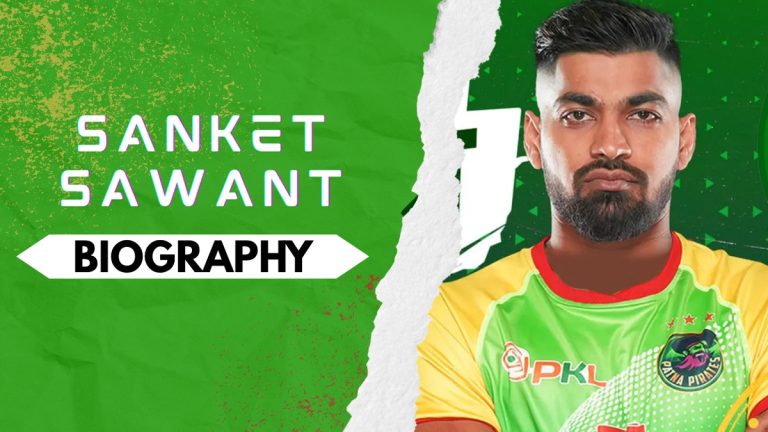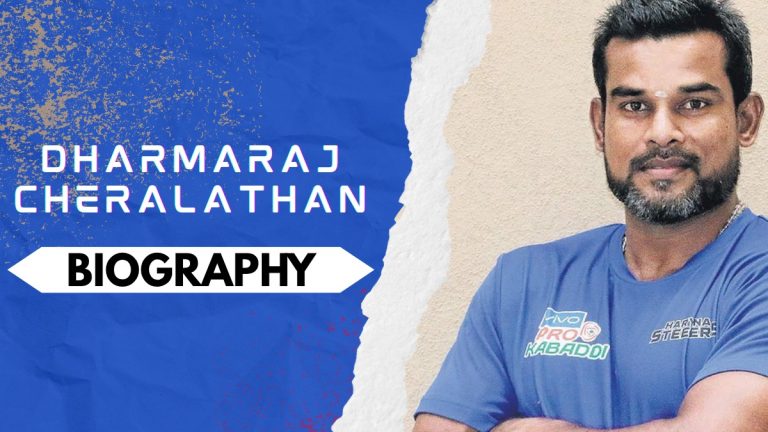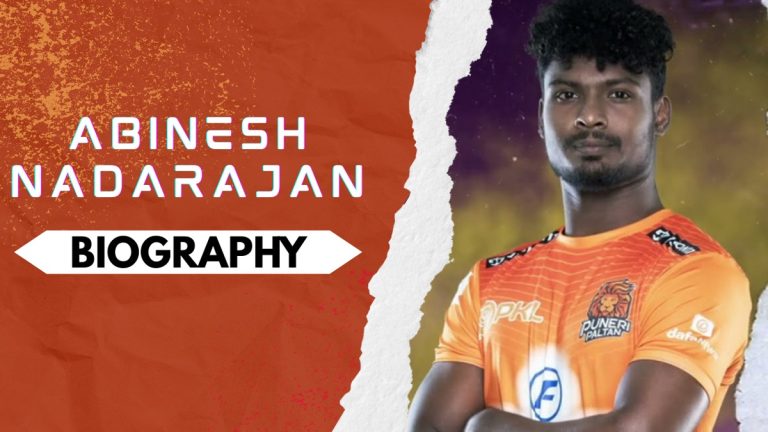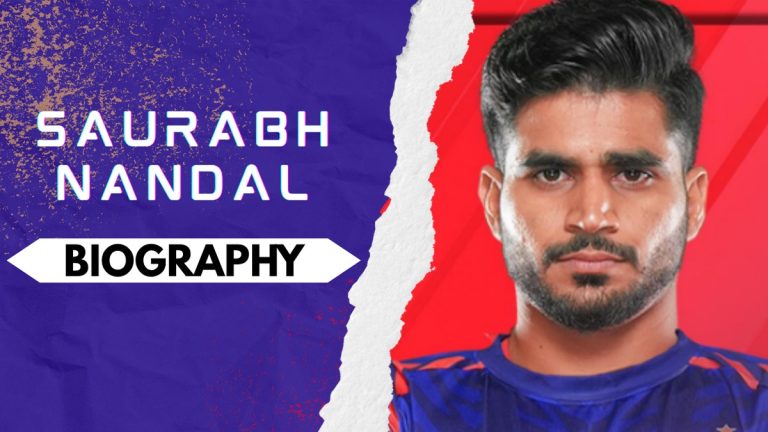Women’s Pro Kabaddi League: Why India desperately need League similar to PKL to revive Women’s Kabaddi?

The Women’s Pro Kabaddi League is the need of an hour which is equivalent to Pro Kabaddi League where the latter have been conducted successfully for 12 seasons.
The Women’s Pro Kabaddi League will elevate Women’s Sports in different ways which include:
- Financially empowering the status of every player
- Enhancing Face Value of all players
- Level of competition would increase
- More Teams will be able to field more players
- Skill wise level would exponentially rise whether in offense and defense.
- Also Women’s Kabaddi would come at the forefront.
Women’s Pro Kabaddi League have never became a full fledge tournament, instead of some experimental events which was conducted for few days, it wasn’t generated that same amount of viewership also fans were not able to turn up.
The same thing have been done with Women’s Premier League as it started as Marquee event during IPL have successfully went on to become full fledge event which is actually benefitting Indian Women’s Cricket as they have recently won World Cup Trophy.
The best thing happened via these tournaments as it gave exposure to Women in Blue, to absorb pressure and wins against majority of teams especially Australia.
When it comes to Kabaddi, the same thing is needed as Women players need recognition at the highest level that would only come in Women’s Pro Kabaddi League.

More Details About the Need related to Women’s Pro Kabaddi League:
Kabaddi has been one of India’s most celebrated indigenous sports, and over the last decade, the Pro Kabaddi League (PKL) has transformed its identity, visibility, and commercial value. What started as a bold experiment has now completed 12 successful seasons. PKL’s roaring success has uplifted the men’s game, created national heroes, and opened a floodgate of opportunities for athletes who once struggled for recognition.
However, while the men’s league has flourished, the Women’s Kabaddi ecosystem remains underdeveloped, despite having immense potential. Several short-term experimental events for women were conducted, but none were full-fledged leagues, none provided long-term stability, and none created the same level of excitement, visibility, or financial empowerment that the men enjoy. This gap is not just a sporting imbalance; it is a missed national opportunity.
The time has come for India to take the decisive leap.
The time has come to build the Women’s Pro Kabaddi League (WPKL).
Just like the Women’s Premier League (WPL) revolutionised women’s cricket and played a role in India’s recent World Cup triumph, the Women’s Pro Kabaddi League can create a similar — if not larger — wave of transformation. The ingredients for success already exist: talent, passion, legacy, and a fan base that loves Kabaddi across generations.
What Indian women athletes need now is a platform.
A stage.
A league that brings them to the forefront.
This article explores why the Women’s Pro Kabaddi League is not just desirable — it is essential, urgent, and unavoidable for the growth of women’s sports in India.
- The Untapped Potential of Women’s Kabaddi:
Women’s Kabaddi is far more competitive, dynamic, and skill-oriented than most fans realise. Across India, thousands of young girls train daily on muddy grounds, school courts, and local arenas with the dream of representing the country. Their raw potential is undeniable — their dedication is equal to the men, their hunger to succeed is immense, and their ability to perform under pressure is extraordinary.
Yet, despite such intent and talent, they lack the basic ecosystem that male players enjoy:
Professional training environments
Structured financial support
Media coverage
Fan engagement
Long-term career opportunities.
2. Financial Aspect of Players:
Sports careers require:
Nutrition
Equipment
Travel expenses
Physiotherapy
Coaching
Recovery systems
Long-term development plans
Most women players currently manage these expenses on their own, with little external support. Many come from humble backgrounds, often juggling education, household responsibilities, and training. A league offers them not just an income but financial independence.
With a professional league:
Players can earn salaries and match fees
Brands would finally invest in women athletes
Long-term commercial contracts would emerge
Players could support their families
Future generations of girls would feel inspired to take up Kabaddi professionally
Money changes mindset.
Money creates dignity.
Money builds confidence.
A Women’s Pro Kabaddi League would provide players the financial strength they deserve — the kind that has already transformed the men’s game through PKL.
3. TV sync Platform:
Every successful sports league creates stars. PKL produced heroes like Pardeep Narwal, Fazel Atrachali, Maninder Singh, Naveen Kumar, and countless others. These players became icons, influencers, and role models. The league amplified their personalities and stories.
A Women’s League would do the same for its athletes.
Visibility equals opportunity.
TV viewership builds fame
Social media increases fan following
Interviews humanise players
Sponsors elevate their market value
Brands choose them as ambassadors
Currently, many talented women Kabaddi athletes remain unknown beyond their local circle. A full-fledged league would transform anonymity into stardom. Their stories of struggle, grit, and excellence would inspire millions of young girls.
When an athlete’s face value rises, the entire sport rises.
4. Increased Level of Competition: A Catalyst for Growth
Competition breeds excellence. PKL became successful because the level of competition increased every season. Players had to push themselves harder, innovate strategies, and evolve their style of play.
Women’s Kabaddi needs the same high-pressure environment.
A structured league would bring:
- Better coaching techniques
- Advanced strength training
- Stronger defensive strategies
- Sharper raiding skills
- Tactical improvements
- Faster gameplay
As more teams participate, more players get opportunities.
As more opportunities arise, more talent emerges.
As more talent emerges, the overall skill level multiplies.
Offense and defense — both pillars of Kabaddi — would evolve dramatically. With a steady league, women players would gain exposure not just to matches but also to:
- Analysis sessions
- Match simulations
- Fitness benchmarks
- Professional guidance
In a few seasons, the entire ecosystem would look drastically different — more competitive, more skilful, and more advanced.
5. More Teams, More Players, More Careers
A full-fledged league means:
More franchises
More players
More opportunities
More professional contracts
More coaching and support staff roles
The men’s PKL has shown that when a league expands, it benefits the entire sports community — from physiotherapists to content creators, from coaches to analysts.
The Women’s Pro Kabaddi League would do the same.
More teams mean:
More girls getting selected
More exposure across states
More scouting at the grassroots level
More schools and academies investing in girls’ Kabaddi
More families supporting their daughters to pursue the sport
India is a country of millions of aspiring athletes. The league would create a professional pipeline, a structure that gives direction and purpose to every dream.
- Rising Skill Levels: A Natural Outcome of Professionalism
Skill development is a direct result of consistent competition. When athletes participate in leagues regularly, they get opportunities to:
Test new techniques
Correct errors
Sharpen reflexes
Adapt to different opponents
Build mental toughness
Improve match stamina
Currently, women athletes don’t get this level of exposure. They rely on occasional tournaments, limited training camps, and short-duration events. A full league would allow them to play under lights, in front of cameras, and with high expectations.
This environment builds champions.
Just like WPL enhanced power hitting, pace bowling, and tactical awareness in women’s cricket, the Women’s PKL would:
Improve raiding variety
Sharpen chain and corner defense
Strengthen tackle combinations
Increase agility and game awareness
Skill rises when the system rises.
And the Women’s Kabaddi system needs this leap forward.
Women’s Kabaddi at the Forefront: The Ultimate Goal
Kabaddi is one of the few sports where India has strong dominance globally. Yet, despite this, women athletes remain in the shadows. The Women’s Pro Kabaddi League would bring them to the center stage — not as supporting characters, but as main heroes.
A league provides:
National spotlight
Media attention
Fan recognition
Storytelling opportunities
Celebrated rivalries
Inspirational narratives
Once women’s Kabaddi becomes prime-time entertainment, everything about the ecosystem changes — the respect, the recognition, the honor, and the visibility.
Women’s Kabaddi should become as celebrated as Men’s PKL.
- Learning from Women’s Premier League: A Proven Blueprint
The biggest proof that a women’s league can transform a sport is the Women’s Premier League (WPL) in cricket. When the WPL was launched, many questioned its potential. But it quickly became a marquee event. It brought high-pressure matches, world-class overseas players, superb coaching systems, and increased media attention.
The results?
India’s women’s cricket team became stronger, more confident, and more tactical.
And the biggest evidence of this progress was the World Cup Trophy they recently won.
This victory didn’t happen accidentally.
It was the result of structural exposure to pressure, professionalism, and global talent.
Kabaddi can achieve the same transformation.
The women’s team needs competitive pressure. They need to learn how to handle big moments, tough opponents, close finishes, and mental battles. A professional league provides exactly this environment.
If WPL can transform women’s cricket,
WPKL can transform women’s Kabaddi — perhaps with even greater impact.
- Recognizing Women Players at the Highest Level
Women athletes in Kabaddi deserve recognition at the highest level — not just as occasional participants but as full-fledged professionals. They deserve applause, stadiums full of fans, prime-time broadcast slots, brand endorsements, and the respect that comes with being a league athlete.
A Women’s Pro Kabaddi League fulfills this need.
It creates a stable platform where:
Performances are documented
Talents are highlighted
Stars are created
Heroes are celebrated
Recognition is not just about fame — it brings responsibility, motivation, and pride. When players are recognized, they push harder, inspire others, and elevate the entire sport.
Women’s Kabaddi deserves this recognition.
And the only pathway is through a league.
From Experiments to Evolution: Why Short-Term Events Are Not Enough
Women’s Kabaddi has seen some experimental events in the past — short tournaments lasting only a few days. While they were steps in the right direction, they never generated:
Strong viewership
Consistent fans
Media buzz
High-pressure matches
Long-term impact
Why?
Because short-term events cannot build a sport.
They do not:
Create team identities
Build rivalries
Establish fan loyalty
Develop player confidence
Generate financial momentum
A proper Women’s Pro Kabaddi League would fill all these gaps.
It provides continuity, structure, and sustainability.
Most importantly, it attracts fans — not just for a few days, but for weeks.
Sports grow when fans return year after year, season after season.
That is what women’s Kabaddi needs.
- Final Perspective: The Women’s Pro Kabaddi League Is Not Just an Option — It Is a Necessity
The success of the men’s Pro Kabaddi League shows what a structured sports league can achieve. India has seen 12 seasons of entertainment, excellence, and emotional moments that have changed the landscape of the sport.
It is time to give women the same opportunity.
A Women’s Pro Kabaddi League will:
Empower women financially
Enhance their visibility and face value
Increase the level of competition
Provide opportunities to more players
Improve offensive and defensive skills
Build fan culture
Bring women’s Kabaddi to the forefront
Transform careers and inspire future generations
Just like WPL reshaped women’s cricket and contributed to India’s World Cup victory, the Women’s PKL can reshape women’s Kabaddi and build champions who dominate the global stage.
The foundation is ready.
The talent is ready.
The audience is ready.
The time is now.
The Women’s Pro Kabaddi League is not just the need of the hour
it is the future of Indian women’s sports.
Vertical Tabular Format: Women’s Pro Kabaddi League Article
| Section | Details |
|---|---|
| Title | Why the Women’s Pro Kabaddi League Is the Need of the Hour: A Deep Dive Into the Future of Indian Women’s Sports |
| Introduction | Kabaddi is one of India’s most celebrated indigenous sports. The Pro Kabaddi League (PKL) has completed 12 successful seasons and transformed the sport. While men’s Kabaddi has flourished, women’s Kabaddi lacks a full-fledged league, resulting in missed opportunities, low visibility, and limited financial empowerment. A Women’s Pro Kabaddi League (WPKL) is urgently needed to elevate the women’s game. |
| Need for Women’s Pro Kabaddi League | A WPKL would place women players at the forefront, just like WPL did for women’s cricket. It would provide a platform, visibility, and professional structure. |
| Reason 1: Untapped Potential of Women’s Kabaddi | Women’s Kabaddi is highly competitive, skill-oriented, and full of raw talent. Thousands of young girls train daily but lack professional infrastructure such as training systems, media exposure, financial support, and year-round competition. A league can unlock national-level potential and create opportunities like WPL did in cricket. |
| Current Gaps | Lack of year-round tournaments, absence of professional ecosystem, no long-term leagues, minimal media coverage, limited fan engagement. |
| Reason 2: Financial Empowerment | A WPKL would help players earn salaries, match fees, and commercial contracts. It would support athletes from humble backgrounds and inspire future generations. Financial empowerment builds dignity, confidence, and independence for women players. |
| Financial Needs of Athletes | Nutrition, equipment, travel expenses, physiotherapy, coaching, recovery systems, long-term training investments. |
| Reason 3: Enhancing Face Value of Athletes | PKL has created male stars; WPKL will do the same for women. Increased visibility leads to fame, endorsements, fan following, and recognition. Women athletes who remain unknown today would become icons and role models. |
| Impact on Athlete Identity | TV visibility, interviews, digital presence, brand deals, storytelling opportunities, national recognition. |
| Reason 4: Increase in Level of Competition | A league ensures tactical, physical, and strategic evolution. With more matches, training intensity rises, fitness improves, and skill levels multiply. Coaching, strength training, defense strategies, and raiding abilities advance rapidly. |
| Elements of Competitive Growth | Better coaching, advanced training, faster gameplay, tactical awareness, match simulations, analysis sessions, fitness benchmarks. |
| Reason 5: More Teams, More Players, More Careers | A league structure brings more franchises, more players, more staff, and a larger professional ecosystem. Girls across states get selection opportunities, scouting increases, and schools/academies invest more in Kabaddi for girls. |
| Pipeline Development | Grassroots scouting, academy participation, increased selection pools, franchise-led development systems. |
| Reason 6: Rise in Skill Levels | With consistent exposure, players sharpen skills such as defense combinations, raiding variations, agility, match stamina, and mental resilience. Professional settings help players test techniques and correct errors. |
| Skill Development Areas | Chain defense, corner tackles, raiding techniques, agility training, pressure-handling, game awareness. |
| Reason 7: Women’s Kabaddi at the Forefront | A league positions women as main heroes of the sport. It brings national spotlight, media attention, celebrated rivalries, and recognition. Women’s Kabaddi can achieve the same popularity as men’s PKL. |
| Visibility Opportunities | Media coverage, fan support, storytelling, rivalries, hero formation, larger audience base. |
| Reason 8: Learning from WPL (Women’s Premier League) | WPL started as a marquee event during IPL and evolved into a major standalone league. It strengthened Indian women’s cricket, improved global competitiveness, and contributed to India’s World Cup victory. Exposure to pressure and professionalism creates champions. |
| Similar Expectations for WPKL | Ability to handle pressure, win close matches, perform against top teams, build confidence and tactical depth. |
| Reason 9: Recognition at the Highest Level | Women deserve stadium applause, prime-time matches, media interviews, and brand endorsements. WPKL will create documented performances, stars, and celebrated careers. Recognition motivates players and elevates the sport. |
| Recognition Impact | More fans, higher respect, stronger motivation, improved player identity, long-term career sustainability. |
| Reason 10: Why Short-Term Events Are Not Enough | Past women’s Kabaddi events were short, experimental, and failed to draw fans. They lacked continuity, identity, storylines, rivalries, and media buzz. Only a long-term league can create sustainable growth. |
| Impact of Short-Term Tournaments | Low viewership, poor fan turnout, no rivalries, limited media coverage, no long-term player development. |
| Need for a Full-Fledged League | Continuity, fan loyalty, better financial systems, consistent broadcasting, stable career paths. |
| Final Perspective | PKL has proven the power of a proper sports league. Women deserve the same opportunity. A WPKL will provide financial empowerment, visibility, increased competition, skill development, fan culture, and recognition. It will inspire future generations and reshape the sport just like WPL reshaped women’s cricket. The time for the Women’s Pro Kabaddi League is now. |
| Conclusion Statement | The Women’s Pro Kabaddi League is not just the need of the hour — it is the future of Indian women’s sports. |
The Women’s Kabaddi League needs to be promoted in such a way with better marketing strategy so that most people could be glued to the screen and watch them play this beautiful sport.
The Women’s Kabaddi League will entirely change the eclipse of Women’s Kabaddi in wider extent as players will share dressing room with overseas players they will understand the culture also massive audience fan base will be present to support them big time.
All together Women’s Pro Kabaddi League will lift the status of women’s Kabaddi all together in a different way.
Let’s see how will support this initiative as Star Sports and Mashal came on board worked for one vision to Uplift Pro Kabaddi League the same could be said about WPKL considering they get an opportunity on regular basis.
Vertical Tabular Format
| Topic | Details |
|---|---|
| Need for Promotion | The Women’s Kabaddi League must be promoted with strong, modern marketing strategies to attract maximum viewership and keep audiences glued to their screens. |
| Impact on Women’s Kabaddi | A full-fledged league will completely transform the landscape of women’s Kabaddi on a wider scale. Players will gain exposure, visibility, and recognition like never before. |
| Global Exposure | Sharing dressing rooms with overseas players will help Indian athletes learn diverse cultures, styles of play, and professional discipline. |
| Fan Engagement | A massive and growing fan base will be ready to support women athletes, creating a dynamic and passionate sports environment. |
| Elevation of the Sport | Women’s Pro Kabaddi League will elevate the status of women’s Kabaddi entirely, opening new doors of opportunity both on and off the mat. |
| Role of Broadcasters | With Star Sports and Mashal Sports coming together to uplift PKL over 12 seasons, a similar long-term effort for WPKL can revolutionize the women’s format. |
| Future Possibility | If given consistent opportunities, the WPKL has the potential to become one of India’s biggest women’s sports leagues. |
Some more details about Women’s Pro Kabaddi League
| Category | Details |
|---|---|
| Financial Empowerment | The league will financially empower every women’s Kabaddi player, |
| offering better salaries, contracts, and long-term stability. | |
| Player Face Value | The league will enhance the overall face value and visibility of all |
| women athletes participating in Kabaddi. | |
| Competitive Level | The entry of more teams and professional systems will increase the |
| level of competition in the league. | |
| Team Expansion | More teams will provide opportunities for more players to be selected, |
| trained, and showcased. | |
| Skill Enhancement | The skill level—both in offense and defense—will rise exponentially |
| due to better coaching, facilities, and exposure. | |
| Sport Visibility | Women’s Kabaddi will finally come to the forefront and gain national |
| recognition similar to other women’s sports. | |
| Past Challenges | Women’s Kabaddi previously had only experimental, short-duration |
| events that did not attract enough viewership or fan turnout. | |
| Learning from WPL | Women’s Premier League started as a marquee event during IPL and |
| evolved into a full-fledged tournament. | |
| Impact of WPL | WPL’s success has directly contributed to the rise of Indian Women’s |
| Cricket, highlighted by their recent World Cup Trophy win. | |
| Expected Outcome for Kabaddi | Women’s Pro Kabaddi League is expected to replicate WPL’s success, |
| transforming the ecosystem of women’s Kabaddi in India. |







